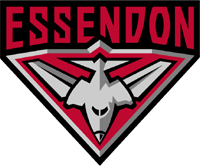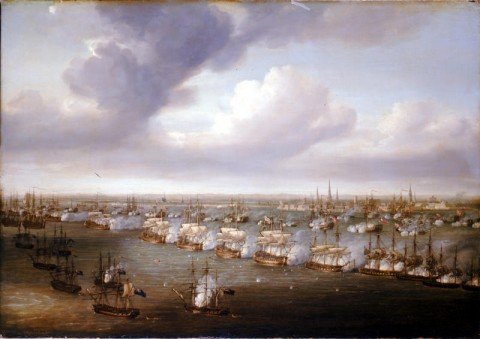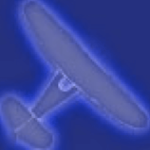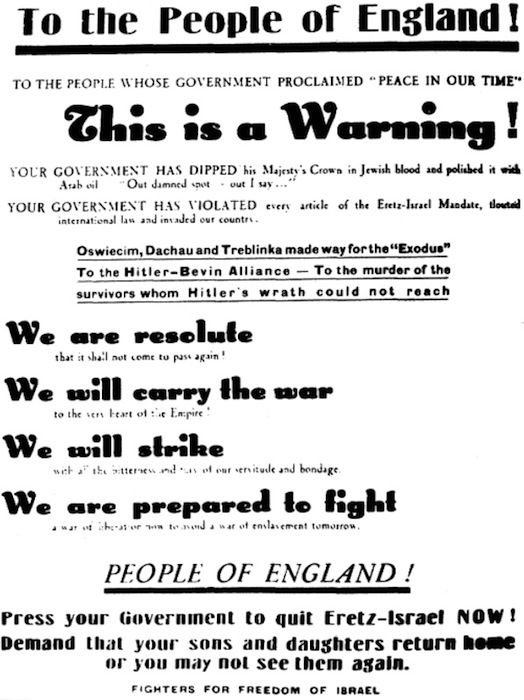
Football, by which I mean Australian Rules, pretty much bores me to tears. Given that I live in the home of Aussie rules, it’s something that I just have to put up with. Melbourne is obsessed with the sport for more than half the year, between the start of the pre-game season in February and that one day in September when the Grand Final is held and those of us who aren’t fanatics can get some relief. (And look forward to the cricket and the tennis …)
However, there is some small interest for the airminded historian. Today being Anzac Day, it is the occasion for the “traditional Anzac Day clash” (where apparently “traditional” means since 1995) between two of the original members of the Australian Football League (founded 1897, as the Victorian Football League), Collingwood and Essendon. Now, each team in the competition has a nickname, ranging from the biological (Kangaroos, Lions) to the religious (Saints, Demons) to the oddly abstract (Blues, Power). Collingwood are the Magpies, and Essendon are the Bombers — and this is obviously where I come in.
So where did they get a name like that? According to the club’s website, the name began to be used from 1922. Other sites add that it was because that year, the club moved to new grounds at Windy Hill, near Essendon Airport, which itself was only founded in 1921. That makes some sense, the 1920s were a boom time for aviation in Australia: Qantas, the Royal Australian Air Force and the Royal Flying Doctor Service all got off the ground in that decade, which also saw the rise to fame of such great Australian aviators as Charles Kingsford-Smith and Bert Hinkler. I can see the appeal of an aviation theme for a club wanting to move with the times. But still, I have questions. As far as I can tell Essendon Airport was never used by the RAAF (which in any event was tiny in this period), so there wouldn’t have been many bombers around Essendon. So was it just the airport that inspired the name? Also, why bombers, and not the more glamorous fighters, which might seem to have many positive attributes for a sporting emblem — speed, agility, power?
I think an understanding of post-war airpower might help here. To take the second question first, fighters were faster (though not always by much) and more agile, but on the other hand they lacked the endurance of the bomber. More importantly, perhaps, the twin machine-guns of most fighters in this period hardly compared with the awesome destructive power of the high-explosive, incendiary and gas bombs that bombers could carry. Yes, that’s right — it all comes back to the theory of the knock-out blow, which was debated extensively in public throughout this period. At least, it was in the UK, but the State Library’s extensive holdings on the subject leads me to suspect the debate was followed closely over here too (or at least that librarians thought that it was …)
And that, I suggest, may help answer the first question. So 1922 was the year that Essendon started being called the Bombers; 1922 was also the year that, back in Mother England, P. R. C. Groves published an extremely influential series of articles in The Times which I think mark the real start of the knock-out blow, at least as far as public awareness is concerned.
Well, that’s all speculation! There are some possible problems. One is that a few sites say that the nickname wasn’t used until the 1940s. Another is the possibility that it originally had nothing directly to do with aeroplanes at all, but referred to a style of kick that Essendon players excelled at circa 1922. If either of those is true then my theory has been shot down in flames. I’ve looked at some academic histories of Aussie rules, but none of them talk about the origins of Essendon’s nickname.
PS It seems that the Magpies’ air defences were too strong this year: the Bombers were downed by 15.16 (106) to 12.17 (89).
Image source: Wikipedia.
![]() This work is licensed under a Creative Commons Attribution-NonCommercial-NoDerivatives 4.0 International License.
Permissions beyond the scope of this license may be available at http://airminded.org/copyright/.
This work is licensed under a Creative Commons Attribution-NonCommercial-NoDerivatives 4.0 International License.
Permissions beyond the scope of this license may be available at http://airminded.org/copyright/.




Pingback: Being Crap Is Kinda Cute…Sometimes (Round Two - Australia, You Bloody Beauty!) « Half Back Flanker - The AFL Blog
Now a certain ex-Colonial boss fuss has died away, one can comment that a certain presidential candidate was always referred to as a ‘ex-fighter pilot’ in the meeja despite having really, and only, been an ex-bomber pilot. USN pilot John McCain flew the Douglas A-4 Skyhawk, a conventional and nuclear-capable bomber, not a fighter.
Thus has the social standing of bomber drivers fallen, in favour of their fighter brethren.